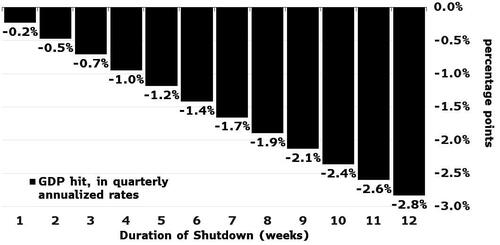


Last week we laid out what the economic consequences of a lengthy government shutdown would likely be, among them a drop in GDP and a spike in the unemployment rate perhaps sufficient to push the US economy into recession, not to mention a halt in most economic data reporting..
... but ahead of the Sept 30 midnight drop dead date, there is still some confusion so let's recap the main points, the first of which is that a government shutdown should not be confused with the debt ceiling and its potential for a sovereign default.
As JPM writes in its latest shutdown note, if no deal is reached by Oct 1 - which is now certainly the default case - then a continuing resolution is one of the more likely paths, but should a CR remain in place by Jan 1, 2024, then there will be an automatic cut to military/defense spending.
A government shutdown does not actually shutdown all aspects of the government, as many elements are exempted. In addition to the items listed below, JPM assumes that Departments of Defense, Health and Human Services, Homeland Security, State, and the Social Security Administration continue to make payments.
Some more details on the economic impact
What about Equities?
JPM's Mkt Intel desk finds that if you one uses the bank's sample size of shutdowns lasting more than one business day, the SPX fell 2.5% in the 10 days leading up to the shutdown with Tech and Real Estate the biggest laggards.
Finally, courtesy of Bloomberg, here is a summary of what government services would stop on Oct 1, and what would go on:
Not all services would abruptly stop. Medicare payments and efforts to safeguard nuclear weapons would be unaffected. You’d likely still get mail and be able to travel on Amtrak. You wouldn’t, however, be able to get married in DC courts.
Many federal employees are likely to be furloughed, but some will be deemed “essential” and work without pay until the shutdown ends. The last major shutdown in 2018-2019 lasted 35 days.
The Office of Management and Budget has collected agency contingency plans that outline what happens in the event of a shutdown. Here are some highlights:

